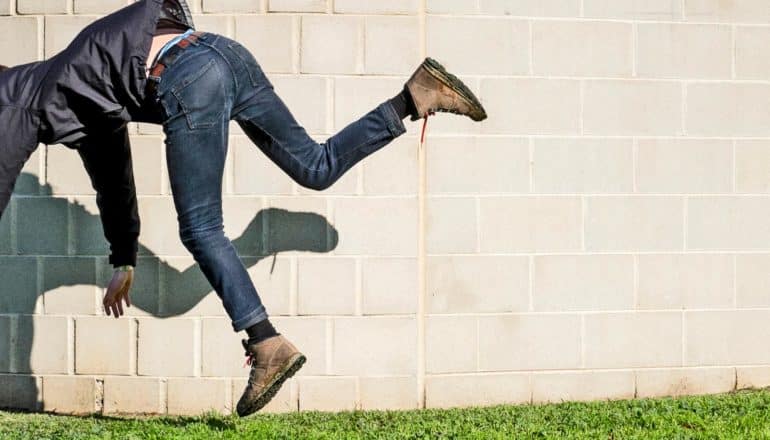
New research reveals factors that affect the falling patterns of young adults. Specifically, their sex, number of prescription medications, and amount of physical activity have a significant effect.
Published in PLOS ONE, the observational study by Shirley Rietdyk, professor in the department of health and kinesiology at Purdue University, examined the frequency and circumstances of falls by undergraduate college students.
She found that men were more likely to report falls while women were more likely to trip without falling. She also discovered that higher levels of physical activity in young adults, such as walking or sports, increase the likelihood of falling—whereas in older adults, higher amounts of physical activity usually protect against falls. However, in a pattern similar to older adults, a higher number of prescription medications resulted in a higher number of falls in young adults.
Falls are a leading cause of injury in almost all ages in the United States, according to nonfatal injury data from the Centers for Disease Control and Prevention, and these findings offer opportunities for more research to investigate the causes of these occurrences.
It could lead to the development of interventions, such as teaching individuals to attend to environmental cues rather than social cues when they are walking. These can be implemented across the life span before a significant balance problem exists.
“If you talk to older adults, a number of them will self-identify as frequent fallers, but then they tell me that they fell a lot when they were younger as well,” Rietdyk says. “That piece really interests me. Is there some sort of underlying mechanism that predisposes someone to falling that continues throughout the life span?”
Falling down surprisingly often
Over the course of 16 weeks, participants in the study were asked to respond to a daily email and answer if they had slipped, tripped, or fallen in the past 24 hours. If they answered yes, more questions about the circumstances of the incident followed.
Rietdyk has been studying balance and mobility in older adults since the 1980s, but she didn’t begin her research in young adults until recent years. She began to notice the significance of falls in young adults when a number of her students shared stories in which they had fallen.
“When people find out that you study falls, they have a fall story to share—their grandmother fell and broke her hip, or their wife was gardening and fell over, or they tell their own fall stories,” Rietdyk says. “What I noticed was that undergraduate students were telling me about their falls, and I thought that was unusual.”
In the study, Rietdyk found that several participants experienced nine or more falls in a semester—about two falls per month—and all of those participants were female students.
This research goes beyond the initial pilot study Rietdyk and her team conducted in 2016, which found that young adults fall more frequently than they had expected. The recent study expanded the number of participants from 94 undergraduate college students to 343, which gave the researchers enough data to support their earlier findings and go beyond them to compare the falling patterns of young women to young men.
“Since we published our first paper in 2016, other authors using different approaches are demonstrating parallel observations: Falls are not a trivial problem for young adults,” Rietdyk says.
Is it drinking? Or texting?
The study included factors like drinking alcohol and texting, which many people assume cause falls in college students, Rietdyk says. Though substance use contributed to several falls—roughly 11%—very few falls resulted from texting. Rietdyk notes that individuals are often walking more slowly during this activity and are, therefore, better equipped to recover. The few falls that did occur while texting typically happened on stairs, which require more environmental attention to foot placement.
However, even taking into consideration the falls with these causes, more than 80% of the falls were not caused by these factors, indicating perhaps that something larger was at play.
Based on the results of this study, Rietdyk says she’s interested in further investigating the difference between women and men related to falls, noting that if the research can pinpoint what’s happening in young adults, it may inform what is happening in older adults and potentially offer solutions to improve overall balance and reduce the number of falls.
Source: Purdue University
The post Young adults are falling down. Here’s why appeared first on Futurity.
from Futurity https://ift.tt/34hpDEe
No comments:
Post a Comment